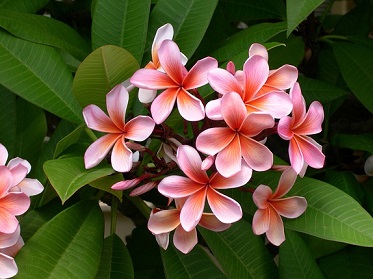Plumeria is an easy-to-grow plant that is becoming steadily popular in the USA as it blooms throughout the summer. But what is the best potting soil for growing Plumeria?
The best Potting soil for Plumeria is a loose well-draining sandy soil that is slightly acidic.
Most Plumeria growers grow them for big blooms instead of dense foliage thus it is also best to have high phosphorus in the soil.
How to Choose the Best Potting Soil For Plumeria?
There are multiple factors that you should look at while choosing the best soil for your Plumeria. Here are their details below.
Well-Draining
The very first thing that you should look for in your soil for Plumeria is that it should be well-draining. Plumeria is prone to overwatering and you should ensure that the soil should be loose, and sandy so that water doesn’t stagnate.
Acidity
Plumeria thrives well in slightly acidic soil. The ideal pH for growing Plumeria is between 6.4 to 6.8.
If the soil is not acidic enough, it makes it difficult for Plumeria to absorb the nutrients through its root. On the other hand, if the soil is too acidic, it may burn the root and the plant may die.
Phosphorous
If not always, often Plumeria is grown for big blooms.
Phosphorous in the soil promotes blooming where as Nitrogen excess in the soil promotes dense foliage.
Thus the best soil for blooming Plumeria should have phosphorous. If not, you should apply fertilizer high in phosphorus and low in Nitrogen to promote blooming.
Check out why your Plumeria is not blooming. Read here
Best Potting Mix for Plumeria
Let us look at the best additives to the soil for the growth of Plumeria.
Cactus Potting Mix
This is an ideal mix for growing Plumeria as it helps with drainage and makes the soil slightly acidic as well.
Perlite for Plumeria
Perlite is also a good choice as a potting mix as it also helps the soil with drainage. It is also inert and hence does not changes the pH level of the soil.
Leaf Compost
You can cover the top of the soil with 1 to 2 inches of Leaf compost. This will help the soil to absorb additional nutrients every time you water.
Both the leaf compost and Perlite help not just with drainage but also encourage earthworms etc that helps aerate the soil.
Homemade Potting Mixes For Plumeria in Pots
You don’t need to buy potting mix when it comes to Plumeria. It is an easy-to-maintain plant that doesn’t require much.
It just needs a slightly acidic well-draining soil.
You may make your own soil by mixing two parts of peat and potting soil and one part of compost and coarse sand.
This will help to encourage drainage and make conditions closer to ideal.
Read about Plumeria Growth Stages
Problems Related to Soil
There are multiple risks that are associated with Soil while growing Plumeria.
Root / Stem Rot – This is a no-brainer now that you have read this article. Stagnated water fills the air pockets and the roots are suffocated without access to oxygen.
The signs of Root rot would be yellowing of the leaves first before spreading to other parts. If caught in time, you can stop watering and it may revive the plant.
But if the problem is more severe, you would need to transplant the plant into well-draining soil.
Pests and fungal infections – Water logging soil can also cause Pests and fungal infections that can be detrimental to the health of the plant.
Stunted growth – Plueria does not need much nutrients, still, lack of nutrients or alkaline soil can lead to stunted growth, browning, or yellowing of leaves.
Risks associated with commercial potting mix – The low-quality commercial potting mix may not have sterilized the soil before packing and shipping.
How to test the acidity level of the Soil?
You might be wondering if the soil is well-draining, then why your Plumeria is not growing well. This could be due to soil acidity.
To confirm the same, you can do a soil pH test. You can easily get the Soil testing kit online.
Alternatively, you can send a soil sample to the nearest nursery for a lab test. They can test and share the results with you.
Keep the acidity levels of the soil to Optimum
Plumeria grows well in slightly acidic soil. The ideal pH for growing Plumeria is between 6.4 to 6.8.
So if in your test, you find that your soil is more acidic or alkaline, you would need to correct the same.
If your soil is found more acidic than required, you can add Garden Lime, or Baking Soda to make it less acidic.
And if your soil is more alkaline than optimum, you can add Peat moss, vinegar, or coffee grounds. This will help to turn your soil acidic.
Conclusion
Plumeria requires slightly acidic well-draining soil. To encourage blooming, it would need more phosphorus than nitrogen.
If you are using a container or pot to grow Plumeria, you can use one having a drainage hole at the bottom of the pot. This will ensure the soil drains well promoting its growth.

